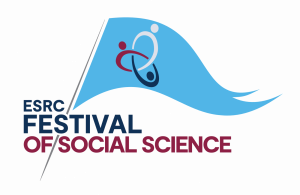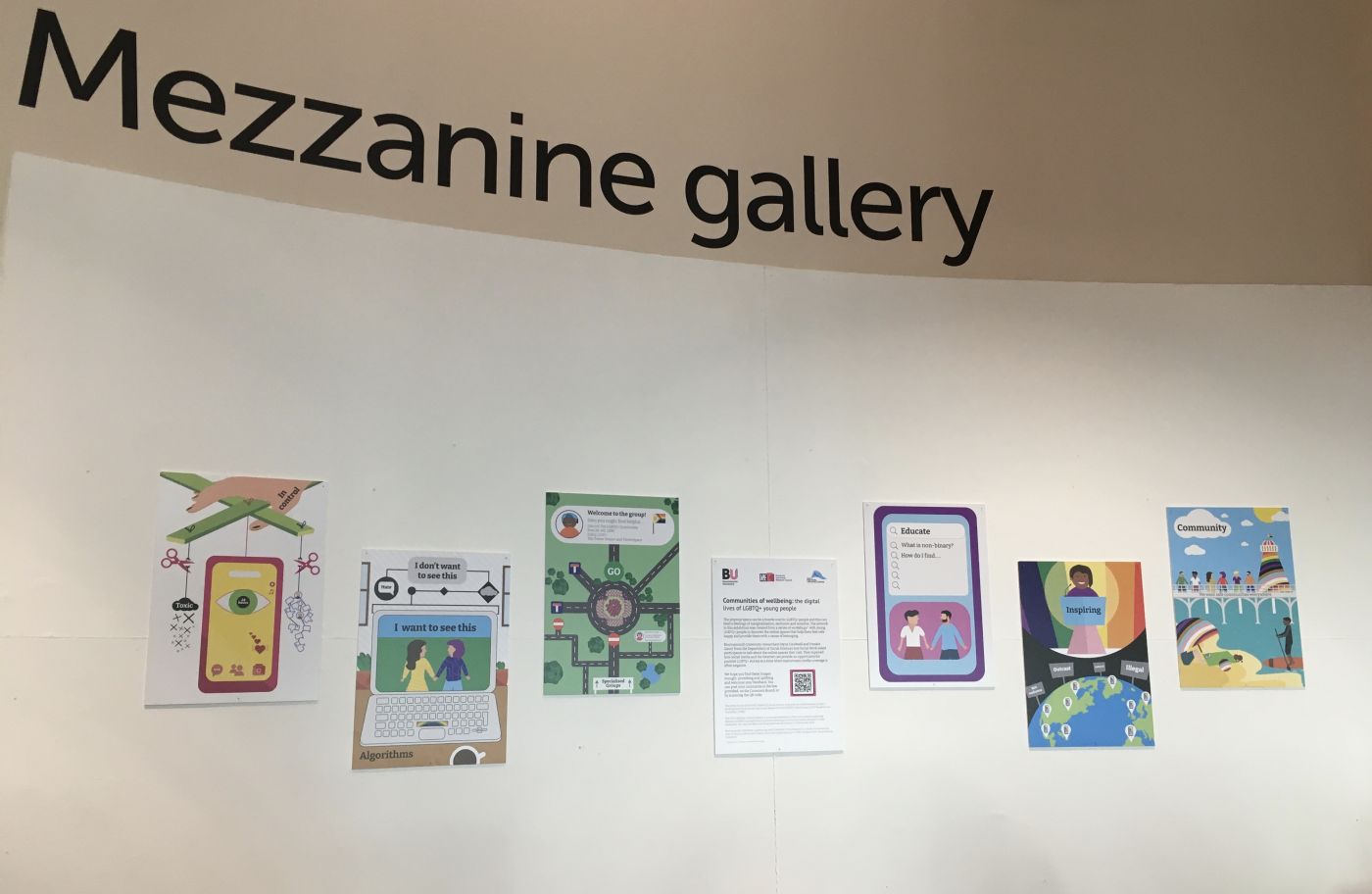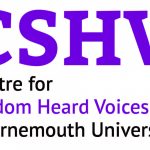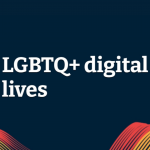
This year’s ESRC-funded Festival of Social Sciences includes the project: Communities of wellbeing: the digital lives of LGBTQ+ young people. Jayne Caudwell and Frankie Gaunt secured a small amount of funding from ESRC and BU research Centre for Seldon Heard Voices (CSHV) to run workshops, have artwork designed and displayed at the Lighthouse, Poole.
The workshops involved discussions about on-line spaces that make LGBTQ+ young people feel safe, happy and provide them with a sense of belonging. Three workshops took place in August and October. Six themes emerged from group discussion at the workshops:
- Types of social media, especially social media platforms that allow participants to have control over who sees their content. This made them feel safer, and Snap Chat was the most popular because content is short-term.
- Coming Out as LGBTQ+ on social media was seen as positive for people who come out and for people who see someone coming out. This was important for diasporic people who are unable to be openly LGBTQ+ in countries where it is illegal. Coming out on Tik Tok and Snap Chat felt safer compared with other social media sites.
- Participants did not like what they called ‘love to hate’ algorithms. It was mentioned that transgender people in the UK experience a lot of hate on social media. However, by being on platforms where they are able to control who sees their content, participants felt they were able to influence algorithms. They said they saw content that was affirming, positive, and joyful.
- Away from the popular social media sites, specialised groups were talked about. These groups were referred to as ‘secret groups’ and viewed as trustworthy. To enter these groups involved a long process of screening, but participants understood that this was needed to make the groups safe.
- Some social media sites were seen to help educate people about LGBTQ+ issues. For example, terms such as ‘non binary’ are explained by non-binary people in posts on websites. This education aspect was considered very important for people in communities where LGBTQ+ people are silenced and marginalised. Social media can help raise awareness and normalise LGBTQ+ for them. Also, social media can be used to seek advise about LGBTQ+ issues and to learn more about things like transitioning for transgender people.
- Workshop participants felt that social media websites can be positive, inspiring, educational, fun, enjoyable and safe because of the posts that are posted not always because of the site. It is the actual posts that are the important thing.
A final point, from the workshops, was that meeting other LGBTQ+ people in-person and doing something together in physical space would be nice.
The above themes were handed over to an artist who composed a series of six picture boards. These picture boards are on display at The Lighthouse in Poole from Friday 25th October to 16th November. The Lighthouse have publicised the project. Go to: Communities of wellbeing: the digital lives of LGBTQ+ young people – Lighthouse
The artwork will also be on display at the ESRC event at University of Southampton on Saturday 9th November as part of Arts and Humanities Day.

 Our Digital Lives – ESRC Festival of Social Sciences
Our Digital Lives – ESRC Festival of Social Sciences Share your thoughts for our anonymous survey about online safety for LGBTQ+ young people
Share your thoughts for our anonymous survey about online safety for LGBTQ+ young people Café Sci: Tuesday 4 October – Digital healthcare for LGBTQ+ communities in Africa
Café Sci: Tuesday 4 October – Digital healthcare for LGBTQ+ communities in Africa










 Dr. Chloe Casey on Sky News
Dr. Chloe Casey on Sky News Final Bournemouth University publication of 2025
Final Bournemouth University publication of 2025 On Christmas Day in the Morning…
On Christmas Day in the Morning… New Nepal scoping review on maternal & neonatal health
New Nepal scoping review on maternal & neonatal health ECR Funding Open Call: Research Culture & Community Grant – Application Deadline Friday 12 December
ECR Funding Open Call: Research Culture & Community Grant – Application Deadline Friday 12 December MSCA Postdoctoral Fellowships 2025 Call
MSCA Postdoctoral Fellowships 2025 Call ERC Advanced Grant 2025 Webinar
ERC Advanced Grant 2025 Webinar Horizon Europe Work Programme 2025 Published
Horizon Europe Work Programme 2025 Published Horizon Europe 2025 Work Programme pre-Published
Horizon Europe 2025 Work Programme pre-Published Update on UKRO services
Update on UKRO services European research project exploring use of ‘virtual twins’ to better manage metabolic associated fatty liver disease
European research project exploring use of ‘virtual twins’ to better manage metabolic associated fatty liver disease